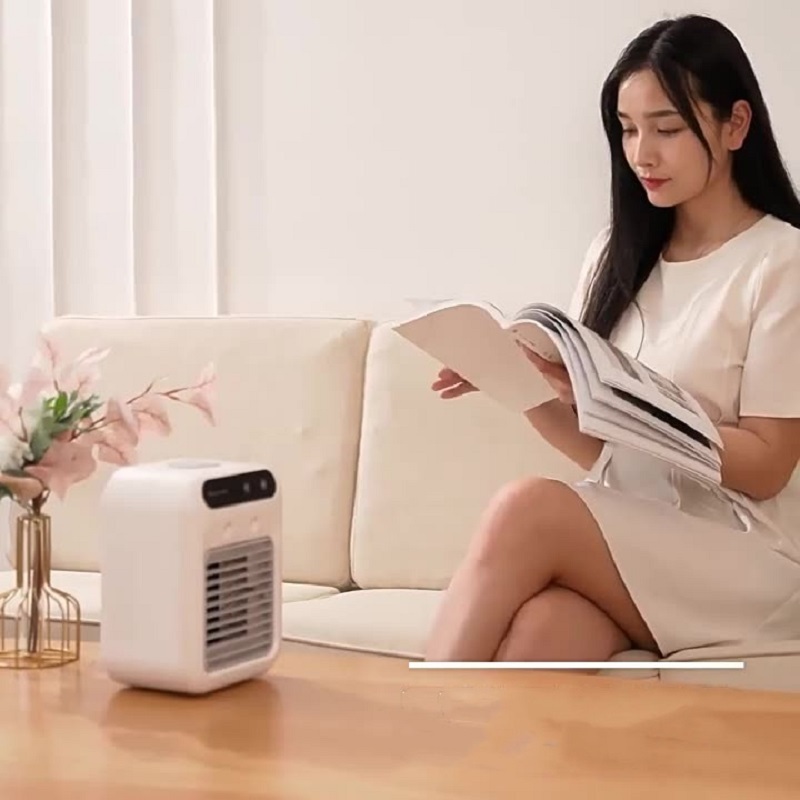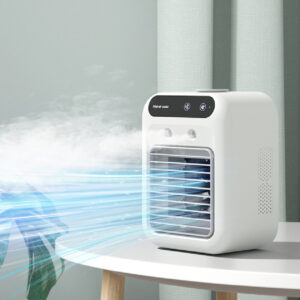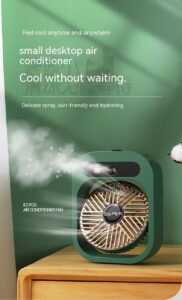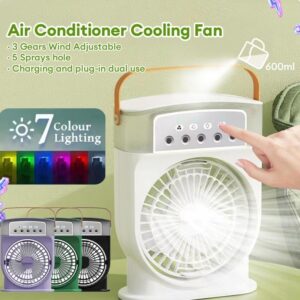Misting Water Coolers

Stay cool and refreshed with misting water coolers. This is the first part of a five-part series exploring everything you need to know about these innovative cooling solutions.
What are Misting Water Coolers?
Misting water coolers are devices that combine the cooling power of water with the refreshing sensation of a fine mist. They offer an effective and energy-efficient way to lower ambient temperatures, making them ideal for outdoor events, patios, workshops, and even certain indoor spaces.
Why Choose a Misting Water Cooler?
Compared to traditional air conditioning units, misting water coolers consume significantly less energy. They also offer a more natural cooling effect, avoiding the dry air associated with air conditioners. This makes them a great choice for those seeking a cost-effective and environmentally friendly cooling solution.
Benefits of Misting Water Coolers
- Energy Efficiency: Lower energy consumption compared to air conditioners.
- Natural Cooling: Provides a refreshing and comfortable cooling experience.
- Cost-Effective: Reduced energy bills and lower initial investment.
- Versatility: Suitable for a variety of outdoor and indoor applications.
Stay Tuned for Part 2
In the next part of this series, we will delve into the different types of misting water coolers available on the market and their specific applications.
Misting Water Coolers: How They Work and Why You Need One
Misting water coolers offer an innovative solution for beating the heat. Unlike traditional Air Conditioner Air Cooler Fan Water Cooling Fan Air Conditioning For Room Office Portable Air Conditioner Cars, these devices utilize evaporative cooling to lower the air temperature. This process involves spraying a fine mist of water into the air, which then evaporates, absorbing heat and creating a refreshing breeze.
The Science Behind the Cool
The magic of misting water coolers lies in the principle of latent heat of vaporization. As water transitions from liquid to gas, it requires energy. This energy is drawn from the surrounding air, resulting in a noticeable temperature drop. The effectiveness of this process depends on factors such as humidity levels; drier air allows for faster evaporation and greater cooling.
Benefits Over Traditional Cooling Methods
Compared to conventional air conditioning, misting water coolers offer several advantages. They are generally more energy-efficient, leading to lower electricity bills. They also provide a more natural cooling effect, avoiding the dry air often associated with air conditioning. For a personal cooling solution, consider a Portable USB Air Conditioner Cooling Fan With 5 Sprays 7 Color Light 600ML Water Tank Spray Mist Air Cooler Humidifiers. This compact option can provide targeted cooling wherever you go.
Choosing the Right Misting Water Cooler
When selecting a misting water cooler, consider the size of the area you wish to cool, the water tank capacity, and the adjustability of the misting settings. Some models also come with features such as timers and remote controls for added convenience. Think about whether you need an Air Conditioning For Room or something more Office Portable Air Conditioner.
Beyond Cooling: Air Purification and Humidification
Many misting water coolers also offer the added benefits of air purification and humidification. The mist can help to trap dust and allergens, while the increased humidity can alleviate dry skin and respiratory issues. While a basic Air Cooler Fan offers basic cooling, misting coolers enhance the air quality. And let’s not forget the simple Water Cooling Fan as a cost-effective option.
Whether it’s for personal use or to cool a larger space, a misting water cooler can be a welcome addition to any environment, offering a refreshing and eco-friendly alternative to traditional cooling methods. Even for use in Cars.
How Misting Coolers Work: The Science Behind the Cool
Misting water coolers don’t just blow air; they ingeniously combine water and air to create a refreshing cooling effect. The core principle is evaporative cooling. This process harnesses the energy required to convert liquid water into vapor.
Here’s a breakdown of the process:
- Water Atomization: The cooler uses a pump or direct water line to force water through tiny nozzles. These nozzles atomize the water, breaking it down into microscopic droplets, creating a fine mist.
- Evaporation: As the water droplets are released into the air, they begin to evaporate. This evaporation process requires heat.
- Heat Absorption: The water droplets absorb heat from the surrounding air, utilizing the thermal energy for the phase change from liquid to vapor.
- Temperature Drop: As the air loses heat to the evaporating water, its temperature decreases, resulting in the cool, refreshing breeze you feel.
The efficiency of a misting cooler depends on several factors, including:
- Ambient Temperature: The hotter the air, the more efficiently the water will evaporate and cool the surrounding environment.
- Humidity: Lower humidity levels allow for faster evaporation, maximizing the cooling effect. In humid conditions, the air is already saturated with moisture, slowing down the evaporation process.
- Airflow: Adequate airflow helps to distribute the cooled air and facilitates further evaporation.
- Water Droplet Size: Finer mist droplets evaporate more readily, leading to more efficient cooling.
Therefore, misting coolers work best in hot, dry climates where the humidity is low and ample airflow is present. Understanding this science ensures you optimize your cooler’s performance for maximum comfort.
The Science Behind the Mist: How Evaporative Cooling Works
Misting water coolers leverage a simple yet effective scientific principle: evaporative cooling. When water evaporates, it requires energy to change from a liquid to a gas. This energy is drawn from the surrounding air, causing a decrease in temperature.
Think of it like stepping out of a shower. The water on your skin evaporates, making you feel cooler. Misting systems amplify this effect by creating a fine mist of water droplets. The smaller the droplets, the faster they evaporate, and the more efficient the cooling process becomes.
Factors Affecting Evaporative Cooling Efficiency
Several factors influence how well a misting water cooler performs:
- Humidity: The lower the humidity, the more readily water will evaporate. Misting systems are most effective in dry climates. In humid environments, the air is already saturated with moisture, reducing the evaporation rate and cooling effect.
- Temperature: Higher temperatures generally lead to faster evaporation. However, the optimal temperature range for evaporative cooling depends on the specific system and environmental conditions.
- Airflow: A consistent airflow helps to remove the cooled air and facilitate further evaporation. This is why many misting systems incorporate fans to enhance their cooling capabilities.
- Water Droplet Size: As mentioned earlier, smaller droplets evaporate faster, leading to more efficient cooling. High-quality misting systems are designed to produce fine, consistent mists.
Beyond Simple Cooling: The Added Benefits of Mist
While the primary function of misting water coolers is to lower the surrounding temperature, they also offer other advantages:
- Dust Suppression: The mist can help to capture and suppress airborne dust particles, improving air quality.
- Plant Hydration: Misting can provide a gentle and effective way to hydrate plants, particularly in hot and dry conditions.
- Insect Repellency (Potential): While not a primary function, some anecdotal evidence suggests that misting may deter certain insects.
Understanding the science behind evaporative cooling is key to maximizing the benefits of your misting water cooler. By considering factors like humidity and airflow, you can optimize its performance and create a more comfortable and enjoyable outdoor environment.



